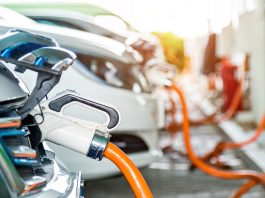Charging network pioneers, Osprey Charging, has revealed that it will be building 150 high-powered electric vehicle charging hubs all over the UK by 2025.
The project will comprise a total of 1,500 150-175KW rapid electric vehicle charging devices, which will be strategically situated in proximity to A-roads and motorways to encourage motorists to transition to electric cars before the imminent ban of new petrol and diesel cars in 2030.
Construction of the first four electric vehicle charging hubs has already commenced, with the first hub, located in Wolverhampton near the A463, scheduled to open next month. Osprey Charging estimates that the initial ten hubs will be in construction by the end of the year. The locations of these charging stations include Banbury, Suffolk, Essex, Glasgow, Wolverhampton, East Lothian, Birmingham, Croydon, Crewe, and Brackley.
Enhancing electric vehicle charging infrastructure
This monumental electric vehicle charging project will see Osprey invest £75m, creating a UK-wide rapid charging network that will utilise the cutting-edge Kempower charging technology. The Kempower devices enable more locations than ever before to host multiple rapid chargers on a single site without compromising charging power or needing extremely expensive grid connections.
The technology innovatively load balances to optimise the amount of charging that each vehicle receives, perfectly complementing the industry-leading Tritium charging hardware that is also being implemented on new Osprey sites. The new electric vehicle charging hubs look to end the anxiety that comes with powering EVs, ensuring that motorists can efficiently charge their vehicles at a state-of-the-art, reliable, and fast infrastructure.
Ian Johnston, the CEO of Osprey Charging, said: “The EV market is booming, with sales up over 117% year-on-year and EV adoption continuing to grow exponentially. In less than nine years’ time, buying a new petrol or diesel car will be impossible, so it’s crucial that public charging infrastructure stays ahead of the curve.
“Through this rollout, we will make charging anxiety a thing of the past. High-powered, multi-charger hubs will herald a new era of public EV charging – enabling mass EV adoption and a clean transport revolution.
“Our rollout of hubs across the country’s major transport routes will ensure drivers are supported with convenient, reliable, on-the-go charging, delivering the best possible consumer experience for UK motorists.”
How does the Kempower technology work?
All of the rapid chargers are proficient at adding 100 miles of range for an electric vehicle in a mere ten minutes of charging and are compatible with every model of rapid charging EV on the market, allowing drivers to pay with contactless without the need for a membership or subscription.
The Kempower chargers work together to distribute charging across multiple vehicles when more than one is plugged in at the same charging hub. The power is spread out depending on demand, which can vary dramatically between different vehicles due to each models’ maximum charging rate and its current battery percentage. This revolutionary power management can significantly reduce the waiting times for charging, making chargers more available to drivers and maximises consumer footfall for the landowners hosting the hubs.
Additionally, grid connections can be optimised due to the load-balancing technology, allowing for the installation of several high-power chargers at each site without the need for more grid power, which reduces the physical footprint of each charger by 74%.
Tomi Ristimäki, the CEO of Kempower, said: “We are extremely happy to launch Kempower EV charging solutions with Osprey Charging – a frontrunner in deploying EV charging technology and developing the customer experience. The UK is one of Europe’s fastest-growing EV markets, and we have the technology and expertise to accelerate this shift. The modularity of Kempower products ensures they have a small footprint, allowing our customers to make use of limited space in densely populated cities and choose solutions that drive meaningful electrification.”
Graeme Cooper, the Head of Future Markets at National Grid, said: “The widespread transition to EVs means we need to rethink how we make, move, and use energy. The power demand for charging will be significant, so it’s crucial that we use the cleanest and cheapest power in our cars and to make the most of each grid connection. By optimising power management at charging facilities, we can ensure a smooth transition away from petrol and diesel whilst maintaining a stable and effective electricity grid.”





